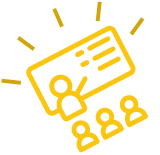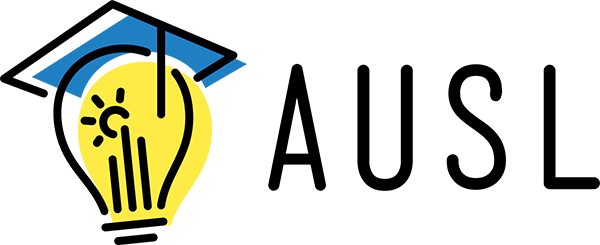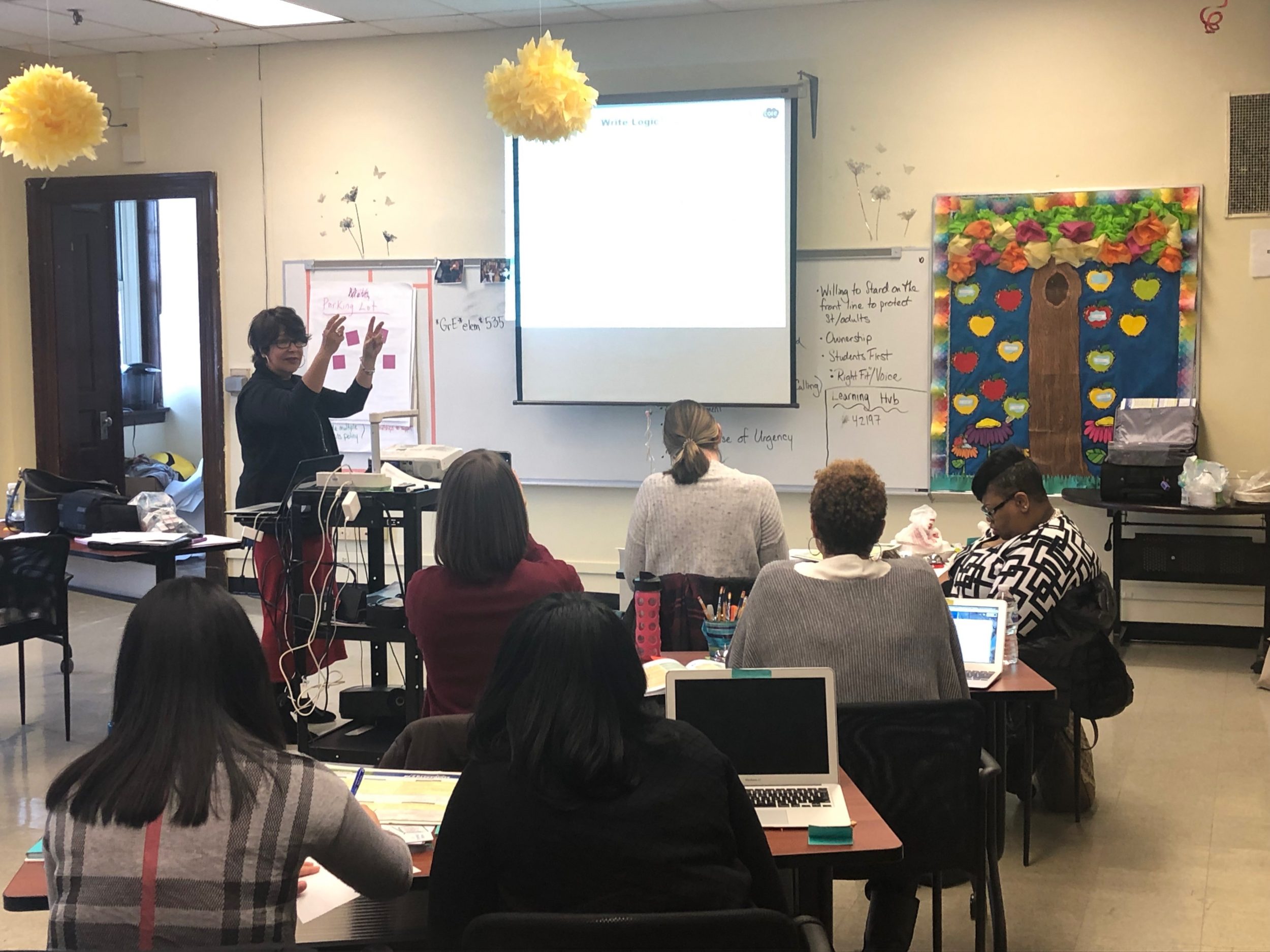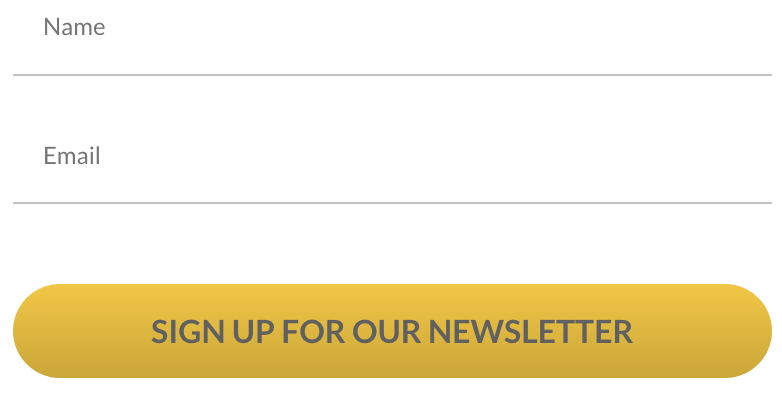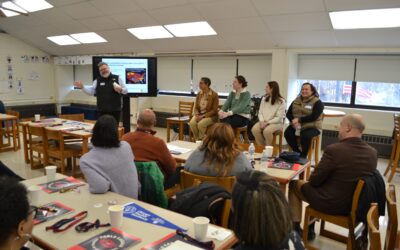[vc_row][vc_column][vc_row_inner css=”.vc_custom_1556131881107{border-top-width: 1px !important;border-right-width: 1px !important;border-bottom-width: 1px !important;border-left-width: 1px !important;border-radius: 1px !important;}”][vc_column_inner][stm_title title_tag=”h2″ sep_enable=”true” title=”Personalizing Learning for School Leaders”][/stm_title][vc_column_text]To ensure that each of our school leaders has an opportunity to develop personally and professionally, network leaders created a principal personalized learning structure for professional development. The objective of this work is to “meet the development needs of each of our leaders and continuously evolve as a network to best support those needs. This flexibility is going to set them up for even more success”, says Annise Lewis, Director of School Leadership (former assistant principal at Collins Academy High School and Principal at Deneen School of Excellence).
Last summer, you were introduced to our pilot of this principal personalized learning work in Transforming Outcomes by Transforming Leaders: Part 2. This year, we’d like to share how we scaled this work to our network school leaders.[/vc_column_text][vc_column_text]About a year ago, the University of Chicago released a study titled “How Do Principals Influence Student Achievement?”. It surfaced what principals in schools with improving learning gains were doing that principals in schools without improving learning gains were not. The key takeaway was successful principals were skilled at fostering strong learning climates and building, managing, and growing shared leadership across teachers and staff. [/vc_column_text][/vc_column_inner][/vc_row_inner][vc_row_inner][vc_column_inner width=”1/2″][vc_column_text]At AUSL, our school continuous improvement model hinges on identifying, selecting, and growing strong and adaptable school leaders that can do just this. But as a network of 31 public neighborhood schools, we recognize that strong leaders come to us with different levels and types of experiences and have varying development needs when it comes to increasing the impact of their work in their buildings and with their teachers and staff.[/vc_column_text][/vc_column_inner][vc_column_inner width=”1/2″ css=”.vc_custom_1556131815646{border-top-width: 1px !important;border-right-width: 1px !important;border-bottom-width: 1px !important;border-left-width: 1px !important;background-color: #ffffff !important;border-left-color: #1e7fc3 !important;border-left-style: solid !important;border-right-color: #1e7fc3 !important;border-right-style: solid !important;border-top-color: #1e7fc3 !important;border-top-style: solid !important;border-bottom-color: #1e7fc3 !important;border-bottom-style: solid !important;border-radius: 1px !important;}”][stm_blockquote]Our leaders range in tenure and experience which means there is a spectrum of personal development areas that need to be supported in order to best serve their schools and students.[/stm_blockquote][vc_empty_space][vc_column_text]– Annise Lewis, Director of School Leadership, AUSL (former assistant principal at Collins Academy High School and Principal at Deneen School of Excellence)[/vc_column_text][/vc_column_inner][/vc_row_inner][vc_empty_space][vc_row_inner][vc_column_inner width=”1/2″][vc_single_image image=”7527″ img_size=”large”][/vc_column_inner][vc_column_inner width=”1/2″][vc_single_image image=”7529″ img_size=”full”][/vc_column_inner][/vc_row_inner][vc_empty_space][vc_row_inner css=”.vc_custom_1556132410032{border-top-width: 1px !important;border-right-width: 1px !important;border-bottom-width: 1px !important;border-left-width: 1px !important;background-color: #1e7fc3 !important;border-left-color: #1e7fc3 !important;border-left-style: solid !important;border-right-color: #1e7fc3 !important;border-right-style: solid !important;border-top-color: #1e7fc3 !important;border-top-style: solid !important;border-bottom-color: #1e7fc3 !important;border-bottom-style: solid !important;border-radius: 1px !important;}”][vc_column_inner][vc_empty_space][vc_column_text]
Learn about all of the ways AUSL supports their school leaders and what a Director of School Leadership (“DSL”) is here!
[/vc_column_text][/vc_column_inner][/vc_row_inner][vc_empty_space][stm_title title_tag=”h2″ title=”Principal Personalized Learning: At Scale”][/stm_title][vc_row_inner css=”.vc_custom_1556570541943{border-top-width: 1px !important;border-right-width: 1px !important;border-bottom-width: 1px !important;border-left-width: 1px !important;}”][vc_column_inner width=”1/2″][vc_empty_space][vc_column_text]Over the course of the summer of 2018, school leaders were surveyed to assess their development as a school leader and their school context. Using these inputs, DSLs and the school management team narrowed down 5 areas of focus or “personalized learning tracks” that aligned to broader network goals:
1. Small Group Instruction (“SGI”):
Leaders describe, analyze, and practice effective implementation and monitoring of monthly small group instruction expectations; analyze relevant data; and align expectations and data to an action plan for SGI at respective schools.
2. Small Group Instruction Personalized Learning:
Leaders leverage a small group instruction roadmap to prioritize areas for improvement and action plan collaboratively around these focus areas.[/vc_column_text][/vc_column_inner][vc_column_inner width=”1/2″ css=”.vc_custom_1556570552948{background-color: #1e7fc3 !important;}”][vc_empty_space][vc_column_text]
Hear about how Principal Aquabah Gonney of Lewis School of Excellence has brought to life the intersection of personalized learning and social-emotional learning in her school culture:
[/vc_column_text][vc_video link=”https://vimeo.com/333183267″ el_aspect=”43″][/vc_column_inner][/vc_row_inner][vc_row_inner][vc_column_inner][vc_column_text]3. Learning Standards Study:
Leaders study learning standards to provide feedback on teacher lesson plan annotations based upon “Z” model; determine teacher classroom look-fors based upon core strategies; analyze student work samples to inform instructional coaching for teachers.
4. Social Emotional Learning (“SEL”) Practices:
Leaders determine SEL needs in their context at the beginning of the year, and learning sessions are designed to focus on these trends.
5. Leadership Case Studies:
Leaders learn to cultivate highly effective teacher leaders by: reading and evaluating a research-based text; applying learning to their school context; collaboratively solving personalized problems of practice; and measuring effectiveness through data (e.g. on-track).
Throughout the school year, school leaders participated in cohorts with 5-7 other school leaders occurring at least quarterly, with independent practice, testing, and continuous improvement in between.
Learn about the work of the Small Group Instruction cohort group below![/vc_column_text][/vc_column_inner][/vc_row_inner][vc_empty_space][stm_title title_tag=”h2″ title=”Small Group Instruction Cohort: Principal Personalized Learning Track”][/stm_title][vc_single_image image=”7532″ img_size=”large”][/vc_column][/vc_row][vc_row gap=”10″][vc_column width=”1/2″][vc_column_text]Small group instruction (“SGI”) is the key to ensuring educational equity for all students, especially in classrooms that encompass a diverse range of learning styles, paces, and abilities. A wide-ranging and historied body of research demonstrates the effectiveness of this instructional style for struggling learners in both math and literacy. [/vc_column_text][/vc_column][vc_column width=”1/2″ css=”.vc_custom_1553096544973{border-top-width: 1px !important;border-right-width: 1px !important;border-bottom-width: 1px !important;border-left-width: 1px !important;background-color: #ffffff !important;border-left-color: #1e7fc3 !important;border-left-style: solid !important;border-right-color: #1e7fc3 !important;border-right-style: solid !important;border-top-color: #1e7fc3 !important;border-top-style: solid !important;border-bottom-color: #1e7fc3 !important;border-bottom-style: solid !important;}”][stm_blockquote css=”.vc_custom_1556133846447{margin-top: 1px !important;margin-right: 1px !important;margin-bottom: 1px !important;margin-left: 1px !important;border-top-width: 1px !important;border-right-width: 1px !important;border-bottom-width: 1px !important;border-left-width: 1px !important;}”]A good teacher doesn’t lead students in one way or another. He/she pushes them to understand their thinking and thought process while collecting information about what they know.[/stm_blockquote][vc_column_text]– Principal Marilyn McCottrell, Fuller School of Excellence & Facilitator of Small Group Instruction Cohort[/vc_column_text][/vc_column][/vc_row][vc_row][vc_column][vc_empty_space][vc_column_text]Six AUSL principals joined the Small Group Instruction (“SGI”) cohort to improve the systems and practice of small group instruction in their buildings this school year. Across our network, teachers use SGI to fill learning gaps for struggling students and challenge students who quickly master concepts all while remaining on-pace to deliver grade level content to all learners. The practice of doing so requires frequent collection of student data for small group instruction grouping and careful planning of lesson delivery, targeted questioning, and standards-aligned assessments. The cohort focused on developing leaders who could guide teachers through these aspects of planning and delivering high-quality and impactful small group instruction.
For example, one area focused on throughout each session was the role of questioning in high-quality small group instruction. Carefully crafted questions not only challenge students cognitively but also serve as a measure of student understanding.[/vc_column_text][vc_row_inner css=”.vc_custom_1556134078784{border-top-width: 1px !important;border-right-width: 1px !important;border-bottom-width: 1px !important;border-left-width: 1px !important;background-color: #ffffff !important;border-left-color: #1e7fc3 !important;border-left-style: solid !important;border-right-color: #1e7fc3 !important;border-right-style: solid !important;border-top-color: #1e7fc3 !important;border-top-style: solid !important;border-bottom-color: #1e7fc3 !important;border-bottom-style: solid !important;}”][vc_column_inner][vc_empty_space][stm_blockquote]A teacher should keep pushing questions back to the kids and let them struggle.[/stm_blockquote][vc_column_text]– Principal Marilyn McCottrell, Fuller School of Excellence & Facilitator of Small Group Instruction Cohort[/vc_column_text][/vc_column_inner][/vc_row_inner][/vc_column][/vc_row][vc_row][vc_column][vc_empty_space][vc_column_text]By using probing questions, a teacher facilitates productive struggle, as students are challenged to discuss their thought process and reasoning behind their claims. This type of rich learning occurs when teachers are mindful about the level and type of questions they ask: higher order versus lower order. Productive struggle as a teaching strategy helps students develop a growth mindset.
Also discussed and tested is how questions serve as a metric of student understanding and can inform the selection of small group instruction groups. The school leaders in the cohort learned about the use of a ‘hinge question’ as a mid-lesson assessment. A hinge question is a question or assignment given every 20-30 minutes that helps a teacher 1) determine which students have and have not mastered the material and 2) identify students to pull for additional small group instruction. By planning hinge questions and subsequent small group options, teachers can adapt to student learning needs in real time.
[/vc_column_text][stm_title title_tag=”h2″ title=”What’s Next with Principal Personalized Learning?”][/stm_title][vc_column_text]The feedback on and interest in this type of personalized learning across the network of AUSL school leaders demands that this type of development – based on leader needs – is necessary to ensure each is getting what they need to continue improving learning gains for their students. This summer, leaders’ needs will be gauged once again, based upon which tracks – some of which may be repeated and some of which may be completely new – will be determined. Stay tuned to hear how we evolve this important work![/vc_column_text][/vc_column][/vc_row]




